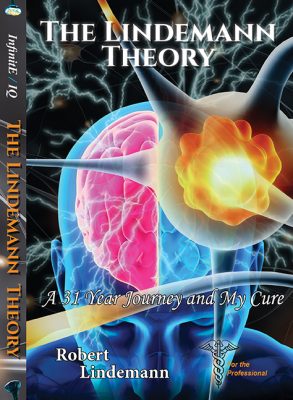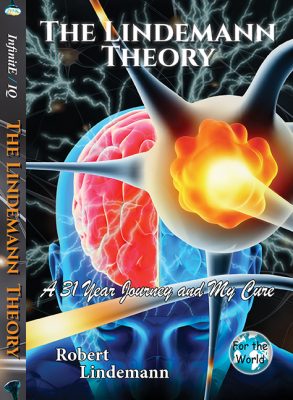FREE Introduction to my book, The Lindemann Theory
The conversation on that fall day in 2013 was brief, but intriguing and inspiring. The phone call proceeded as follows:
“Robert, I wanted to thank you for our conversation last night. I simply never understood. Thank you.”
I replied, “You are very, very welcome.” I felt I had comforted and taught someone, and given them peace.
I remember the night of that conversation vividly. Certainly, it never would have happened, had not a head cold clogged my ears and nose, rendering me tired and vulnerable. My young beautiful one and two-year olds’ nightly alarms had also rendered entrance to deep sleep a near impossibility for weeks prior, again leaving me—well—frankly, brain numb.
Ted, a very good friend, was in from Chicago on business. We met and had dinner at another friend’s restaurant, Rapture. Dan sat down with Ted and me, and his waiters presented us with a wonderful bottle of merlot. A banquet was to follow. Certainly, we spoke of the glory days, after a chat of twenty-first century politics, economics and world current events left us stranded in the “glass-half-empty mentality”—rather than the fuller bouquet of the topped-off merlot.
It was during the glass-half-empty stage of the conversation when Dan spoke of a friend, who had thrown himself in front of a train, ending his life. He left many, including himself, quite effected—actually devastated. It was when Dan stated, “How could he have been such a coward!” that I knew immediately the truth needed to follow; the truth to set the three of us, and countless others, free.
I knew the truth, because I lived and experienced it. I was thankful my two friends had not experienced it. I do not want any of you to experience it, either.
I first explained a lecture I had sat through during my collegiate studies. The class was Psychology 101, a class which usually is the standard course to present the controversial work of Dr. Harry Harlow from the 1950s to 1960s. His work was controversial because he performed experiments on juvenile Rhesus macaques, a social animal like humans, whereby he subjected them to social isolation to create a model for the study of depression. Unfortunately, it was a very successful model. Indeed, the depth of the depression experienced by these primates was so severe many of them starved themselves to death. I recall the professor even saying one monkey actually hung himself, although I was unable to verify this through reviewing Harlow’s writings or available research.
I took a deep breath and explained to Ted and Dan I had also experienced such a plunge into darkness. It was a place filled with agonizing mental pain, and was one step further removed from the horribly painful state of severe depression I had already been in. It was a place with no mental consideration of writing a suicide note, but rather an inexplicable drive to end that mental pain through ending my life. “Cowardly?” you say. Folks, I didn’t even know what hit me! Remember, man’s greatest fear is death. No one rushes to get there!
I want to tell you about that plunging night. I also want to tell you about my thirty-one-year battle with mental illness. It was an illness that manifested at age fifteen with a severe obsessional neurosis, also known as obsessive-compulsive disorder (OCD). Stedman’s Medical Dictionary defines obsessive compulsive as having the tendency to perform certain repetitive acts or ritualistic behavior to relieve anxiety, as in obsessive-compulsive neurosis. It is a definition, along with others I have seen, that I hope to expand upon and improve. The disorder left me in agonizing pain!
In this memoir, The Lindemann Theory, A 31 Year Journey and My Cure, I theorize and believe I can validate an eight-year cure, thus far. The medications that previously removed symptoms of OCD went on to create a broad range of events, including direct side effects, a misdiagnosis and—indirectly—other sequela (conditions following the original disorder of OCD). Eight years ago, in 2009, I would perform a retrospective analysis of these events, leading me to create The Lindemann Theory—which would lead to my cure. I went on to create InfinitE/IQ to help us all. In this book, the following list of events will be examined in detail. The very events that tortured me would create a history that would set me free.
Events:
- Three major periods of OCD
- Four major depressions
- Three of the major depressions requiring electroconvulsive treatments (ECT)
- Ten to fifteen major “burn-outs” (at least three to six weeks long)
- Two total hallucinatory to full-psychosis events
- Periods of mania, delusions, paranoia, obvious stress and anxiety
- Two lock downs
- Two suicide attempts (one near death)
- Six major hospitalizations (one week or longer)
- Five emergency room visits, thousands of doctor visits
- Twenty direct and one hundred indirect doctors
- Almost twenty different medications
- One sleep research facility experience
- And more
As you can see from the above, I experienced and can understand a vast array of psychiatric conditions. I believe I have an uncommon insight, covering not only symptomatology, but many of the therapeutic modalities available in psychiatric treatment today. Experience, coupled with academia—and driven by empathy and passion—forms the basis for this write and your read.
I have been healthy, happy, symptom free (none, zero), and long-term psychotropic medication and long-term therapy free for the past eight-plus years. My diagnosis today is happy and healthy, and I will explain how this is possible and how it happened.
I simply never want any of you to ever enter that plunge—nor even get close! The restaurant I sat in that night was called Rapture: “passion” in French. I have no choice but to write the following pages with passion and joy, from deep in my heart.
Now, while I write with joy and passion, I am also filled with anger. That is OK though, as anger and passion are often needed to wake people up. They are the fire for change. How is it possible we are in the twenty-first century, and there is still a stigma associated with mental illness? It is simply beyond me. We have the knowledge to send a rover laboratory to crawl around on a planet thirty-five-million-miles away, yet we remain naive in calling a suicide victim a coward. We must become educated! The “innocence” of arrogance and ignorance can no longer be acceptable.
It is very simple. Until the words “mental illness” roll off the tongue, drawing the same level of compassion and urgency as the word “cancer”, people will continue to needlessly suffer, and yes, die—and research will be stymied.
I am imploring you to listen to my story, my words and my reasons. There is no reason for any of you to ever see the darkness I saw, but every reason to live this life in the moment with joy. I am so humbled, excited and full of gratitude as you move forward in this read.
There is nothing wrong, but everything right with hope!
Robert W. Lindemann
The “thank you” was said with such sincere, refreshing gratitude I was
pushed back to what I already knew I wanted to do. The wheels in my mind
started turning.
What people say?
“A MAN of God and Jesus – gives HUGE THUMBS UP for THE BOOK of The YEAR
“This is an incredible story; no, a journey of so much more than physical healing. This is a journey of healing of body, heart and spirit; …” Read more…
~ Pastor George Montanari



